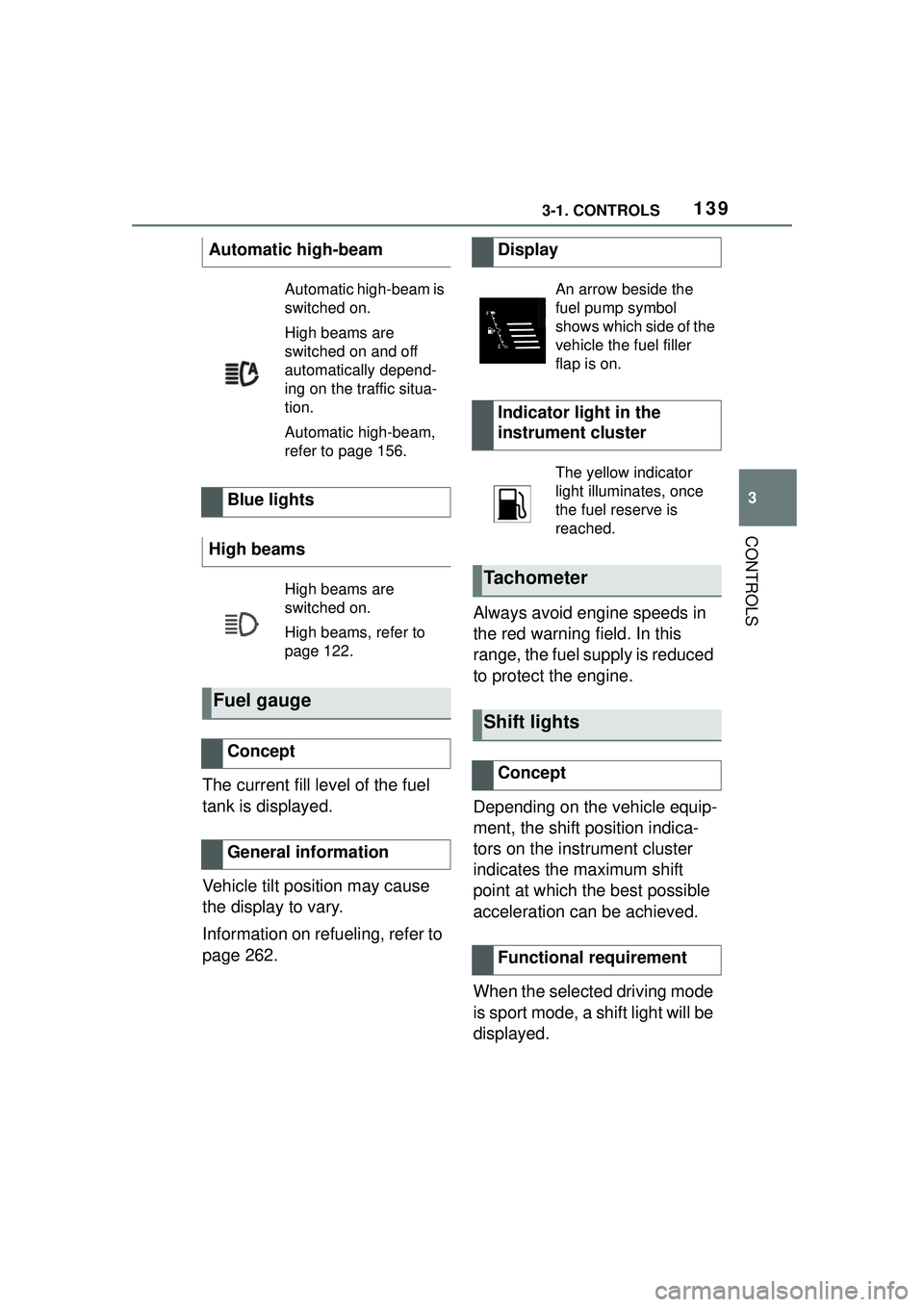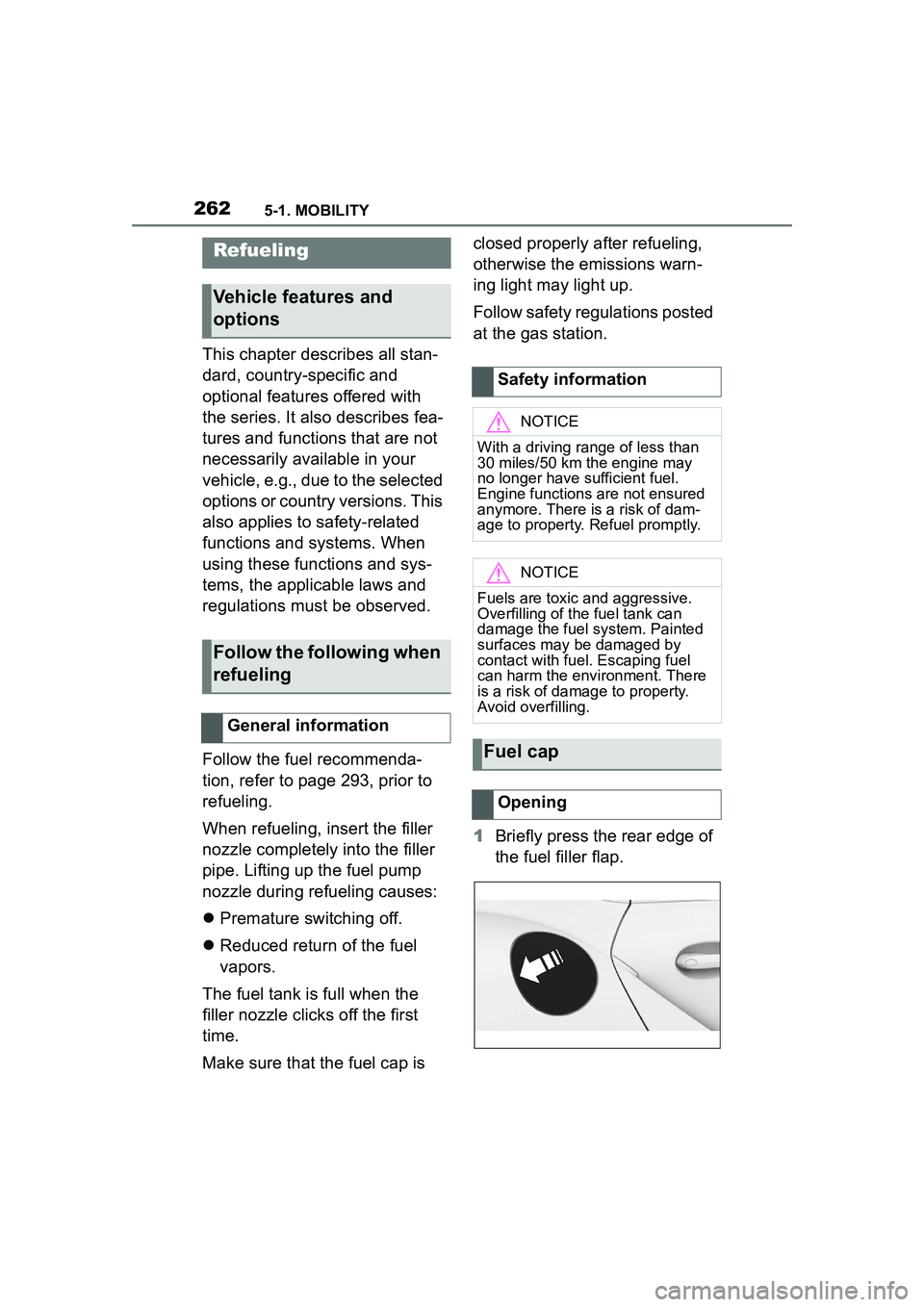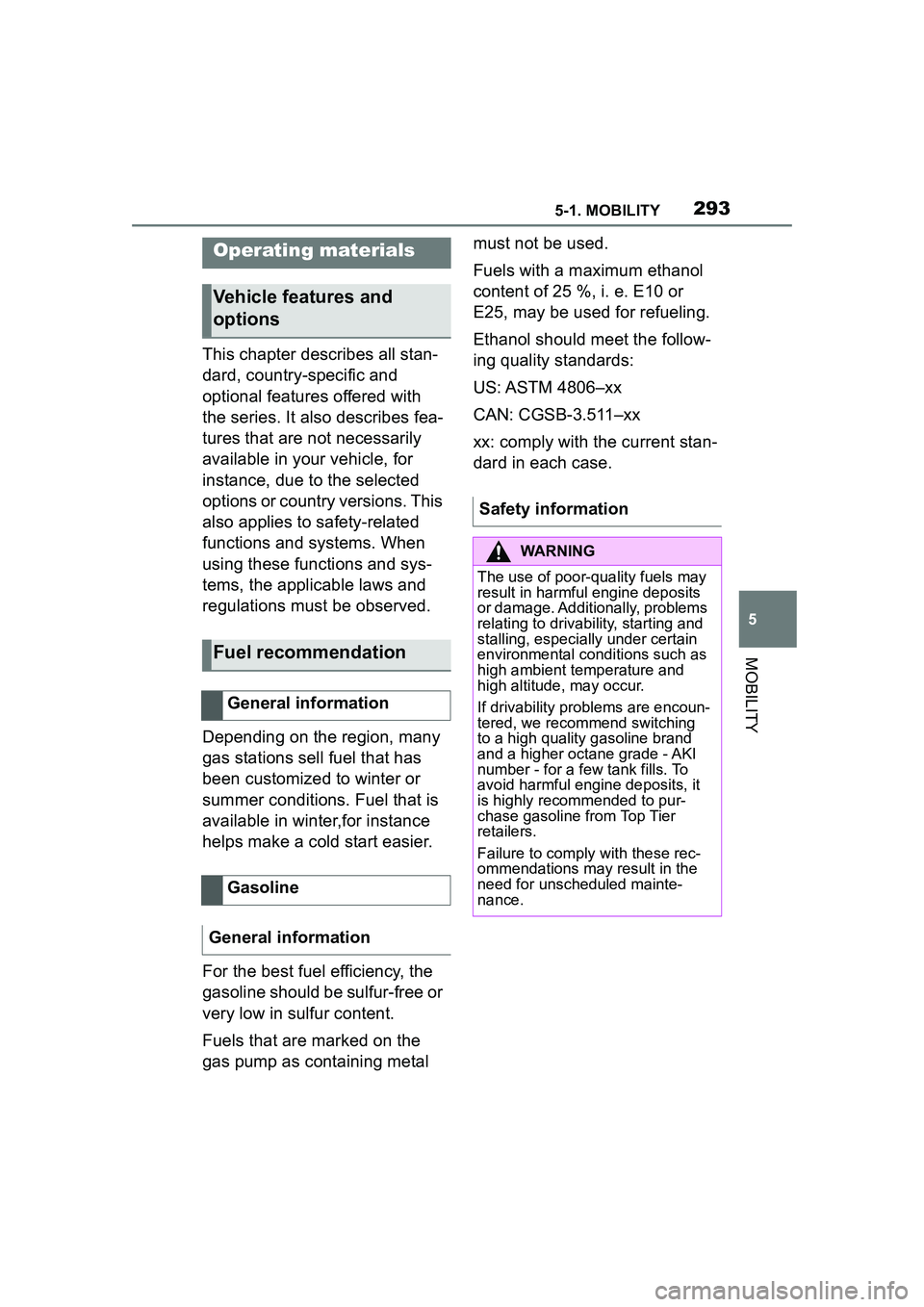Page 30 of 356

302-1. QUICK REFERENCE
1Press the rear edge of the
fuel filler flap to open it.
2 Turn the fuel cap counter-
clockwise.
3 Place the fuel cap in the
bracket attached to the fuel
filler flap.
For the best fuel efficiency, the gasoline should be sulfur-free or
very low in sulfur content.
Fuels that are marked on the
gas pump as containing metal
must not be used.
P. 2 9 3
The tire inflation pressure speci-
fications can be found in the tire
inflation pressure table in the
printed Owner's Manual.
With Tire Pressure Monitor
TPM:
The corrected tire inflation pres-
sures are applied automatically.
Make sure that the correct tire
settings have been made.
With tires that cannot be found
in the tire pressure values on
the Control Display, reset the
Tire Pressure Monitor TPM.
Regularly check the tire inflation
pressure and correct it as
needed:
• At least twice a month.
• Before embarking on an extended trip.
Seat heating.
Climate control opera- tion.
Air flow, manual.
Refueling
Refueling
Fuel cap
Gasoline
ButtonFunction
Wheels and tires
Tire inflation pressure speci-
fications
After correcting the tire infla-
tion pressure
Checking the tire inflation
pressure
Page 139 of 356

1393-1. CONTROLS
3
CONTROLS
The current fill level of the fuel
tank is displayed.
Vehicle tilt position may cause
the display to vary.
Information on refueling, refer to
page 262.Always avoid engine speeds in
the red warning field. In this
range, the fuel supply is reduced
to protect the engine.
Depending on the vehicle equip-
ment, the shift position indica-
tors on the instrument cluster
indicates the maximum shift
point at which the best possible
acceleration can be achieved.
When the selected driving mode
is sport mode, a shift light will be
displayed.
Automatic high-beam
Automatic high-beam is
switched on.
High beams are
switched on and off
automatically depend-
ing on the traffic situa-
tion.
Automatic high-beam,
refer to page 156.
Blue lights
High beams
High beams are
switched on.
High beams, refer to
page 122.
Fuel gauge
Concept
General information
Display
An arrow beside the
fuel pump symbol
shows which side of the
vehicle the fuel filler
flap is on.
Indicator light in the
instrument cluster
The yellow indicator
light illuminates, once
the fuel reserve is
reached.
Tachometer
Shift lights
Concept
Functional requirement
Page 262 of 356

2625-1. MOBILITY
5-1.MOBILITY
This chapter describes all stan-
dard, country-specific and
optional features offered with
the series. It also describes fea-
tures and functions that are not
necessarily available in your
vehicle, e.g., due to the selected
options or country versions. This
also applies to safety-related
functions and systems. When
using these functions and sys-
tems, the applicable laws and
regulations must be observed.
Follow the fuel recommenda-
tion, refer to page 293, prior to
refueling.
When refueling, insert the filler
nozzle completely into the filler
pipe. Lifting up the fuel pump
nozzle during refueling causes:
Premature switching off.
Reduced return of the
fuel
vapo
rs.
The fuel tank is full when the
filler nozzle clicks off the first
time.
Make sure that the fuel cap is closed properly after refueling,
otherwise the emissions warn-
ing light may light up.
Follow safety regulations posted
at the gas station.
1
Briefly press the rear edge of
the fuel filler flap.
Refueling
Vehicle features and
options
Follow the following when
refueling
General information
Safety information
NOTICE
With a driving range of less than
30 miles/50 km the engine may
no longer have sufficient fuel.
Engine functions are not ensured
anymore. There is a risk of dam-
age to property. Refuel promptly.
NOTICE
Fuels are toxic and aggressive.
Overfilling of the fuel tank can
damage the fuel system. Painted
surfaces may be damaged by
contact with fuel. Escaping fuel
can harm the environment. There
is a risk of damage to property.
Avoid overfilling.
Fuel cap
Opening
Page 293 of 356

2935-1. MOBILITY
5
MOBILITY
This chapter describes all stan-
dard, country-specific and
optional features offered with
the series. It also describes fea-
tures that are not necessarily
available in your vehicle, for
instance, due to the selected
options or country versions. This
also applies to safety-related
functions and systems. When
using these functions and sys-
tems, the applicable laws and
regulations must be observed.
Depending on the region, many
gas stations sell fuel that has
been customized to winter or
summer conditions. Fuel that is
available in winter,for instance
helps make a cold start easier.
For the best fuel efficiency, the
gasoline should be sulfur-free or
very low in sulfur content.
Fuels that are marked on the
gas pump as containing metal must not be used.
Fuels with a maximum ethanol
content of 25 %, i. e. E10 or
E25, may be used for refueling.
Ethanol should meet the follow-
ing quality standards:
US: ASTM 4806–xx
CAN: CGSB-3.511–xx
xx: comply with the current stan-
dard in each case.
Operating materials
Vehicle features and
options
Fuel recommendation
General information
Gasoline
General information
Safety information
WARNING
The use of poor-quality fuels may
result in harmful engine deposits
or damage. Additionally, problems
relating to drivabilit y, starting and
stalling, especially under certain
environmental conditions such as
high ambient temperature and
high altitude, may occur.
If drivability problems are encoun-
tered, we recommend switching
to a high quality gasoline brand
and a higher octane grade - AKI
number - for a few tank fills. To
avoid harmful engine deposits, it
is highly recommended to pur-
chase gasoline from Top Tier
retailers.
Failure to comply with these rec-
ommendations may result in the
need for unscheduled mainte-
nance.
Page 311 of 356
3115-1. MOBILITY
5
MOBILITY
F1, F3, F39
F36, F61, F62, F67, F68,
F71
F4
F67, F68
SymbolMeaning
VSC Vehicle Stability
Control System
Parking brake
Air conditioning
Blower motor, Interior
ventilation
Rear window heating
Seat heating
Seat setting
Crash-security module
Switching center column,
Light switch element,
steering Operating panel
Audio
HiFi amplifier, Video mod-
ule TV
Rear-view mirror
Overhead function cen-
ter, Exterior door handle
electronics
Instrument cluster
Additional battery: Dual
Accumulator System
(DSS)
Fuel pump control elec-
tronics, Natural Vacuum
Leak Detection, Gas gen-
erator for battery safety
terminal, Remote control
receiver
Electric window opener
Heating and air-condi-
tioning system
Vehicle's diagnostic port
(interface)
Interior lights in the boot
Vertical Dynamic platform
Vertical Dynamic platform
Vertical Dynamic platform
Mono Camera (Kafas)
Head Unit
Active Sound Design
SymbolMeaning